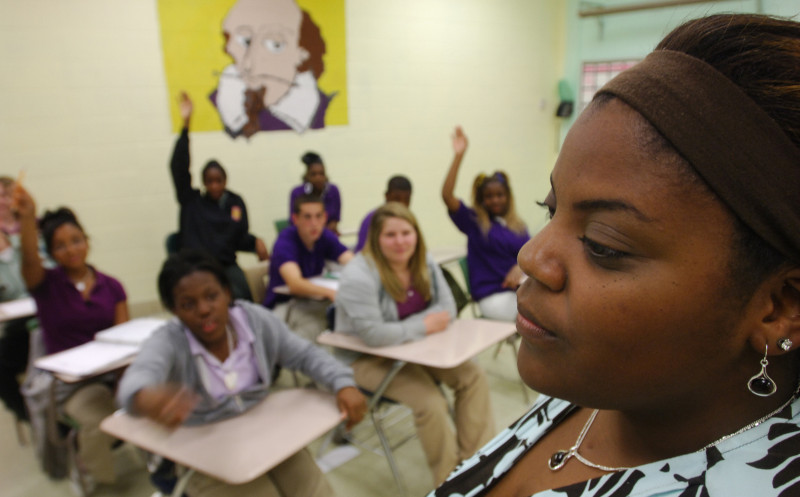 You hear it all the time: Class size doesn't matter if you have great teachers. This maxim - a favorite among many in the education reform business - clumsily merges two distinct thoughts. Yes, great teachers in every classroom are a must, but so are manageable class sizes.
You hear it all the time: Class size doesn't matter if you have great teachers. This maxim - a favorite among many in the education reform business - clumsily merges two distinct thoughts. Yes, great teachers in every classroom are a must, but so are manageable class sizes.
But neutralizing the class size issue has been a top priority for those determined to ignore the inconvenient truths about how untenable learning conditions, 40 students in a classroom for example, affect student performance. Doing so also provides many lawmakers with yet another avenue to blame teachers and even cut funding.
They got an assist last week from a report by the Edunomics Lab at Georgetown University. The authors, Marguerite Roza and Amanda Warco, went for the trifecta, wrapping arguments for merit pay, larger class sizes and cost-cutting all up into a proposal to pay the "best" teachers more to take on more students.
The paper's argument goes like this: If a district's top-performing teachers were willing to add more students to their class in exchange for a bonus, any potential decline in student learning associated with larger class size would be nullified by more students being instructed by a first-rate educator. Student outcomes would improve and, furthermore, the district could cut costs. Packing more students into classroom reduces the number of educators needed to staff schools, creating savings far beyond the cost of the bonuses.
Patricia H. Hinchey, a professor of education at Penn State University, took a look at the proposal and found that its analysis is built on a house of cards. According to Hinchey, the Edunomics Lab report is superficial, misleading, and largely unsubtanstiated by any original or existing research. The proposal, she concludes, "appears to be primarily a scheme to reduce the teaching force.”
In addition to brushing aside the piles of evidence detailing how large class size adversely impacts student learning, Roza and Warco run aground on their assumptions on who qualifies as a top teacher. Although they don't specifically identify what they used, Hinchey says its fairly apparent they looked to value-added model (VAMS) based on test scores - an increasingly dubious measure of teacher effectiveness.
A 2013 study published by the American Education Research Association found a weak correlation between these models of teacher evaluation and the actual quality of classroom instruction. For example, many teachers who were well-regarded on most indicators nonetheless had students who tests scores that were below average, and vice versa.
The Edunomic Lab's proposal also rests on the assertion that "projected double-digit bonuses are high enough to persuade teachers to accept increased class size." But Hinchley argues that their confidence ignores or misunderstands what we know about teacher job satisfaction. In surveys, better working conditions regularly come out on top of the wish-lists of educators. If class sizes are made even larger, it's uncertain at best if a bonus would actually lead to improved job satisfaction - especially if more administration support, collaborative time, and professional development remain elusive.
That doesn't mean that a teacher wouldn't accept the tradeoff but, as many experts have pointed out, it doesn't make sense to gloss over obvious differences in teachers' workplace conditions. Edunomic's paper bases its data on the affluent Cypress-Fairbanks school district in a suburb of Houston, where the average class size is only 22 students.
"A high school social studies teacher working in a wealthy suburban school teaching classes of 20 is likely to have a different attitude about adding two or three students to her class than a high school math teacher in an under-resourced urban school teaching classes of 40," writes HInchey
To be sure, teachers deserve to be paid as the professionals they are, but Hinchey concludes that the projected bonuses in the Edunomics Lab proposal "will come at the expense of their time and energy, while children will receive still less teacher attention in increasingly crowded classrooms. The clear winners will be districts that save money by reducing professional staff."








